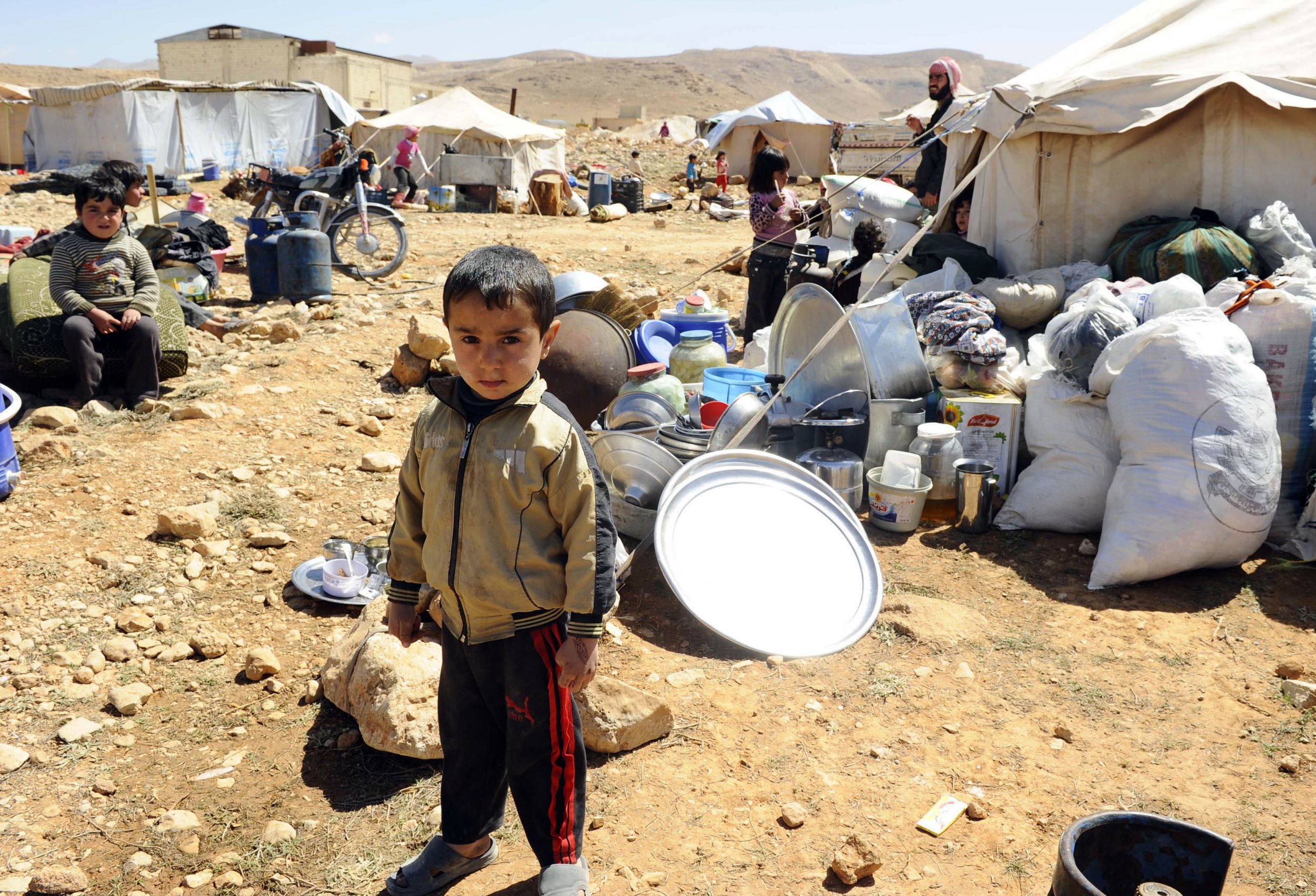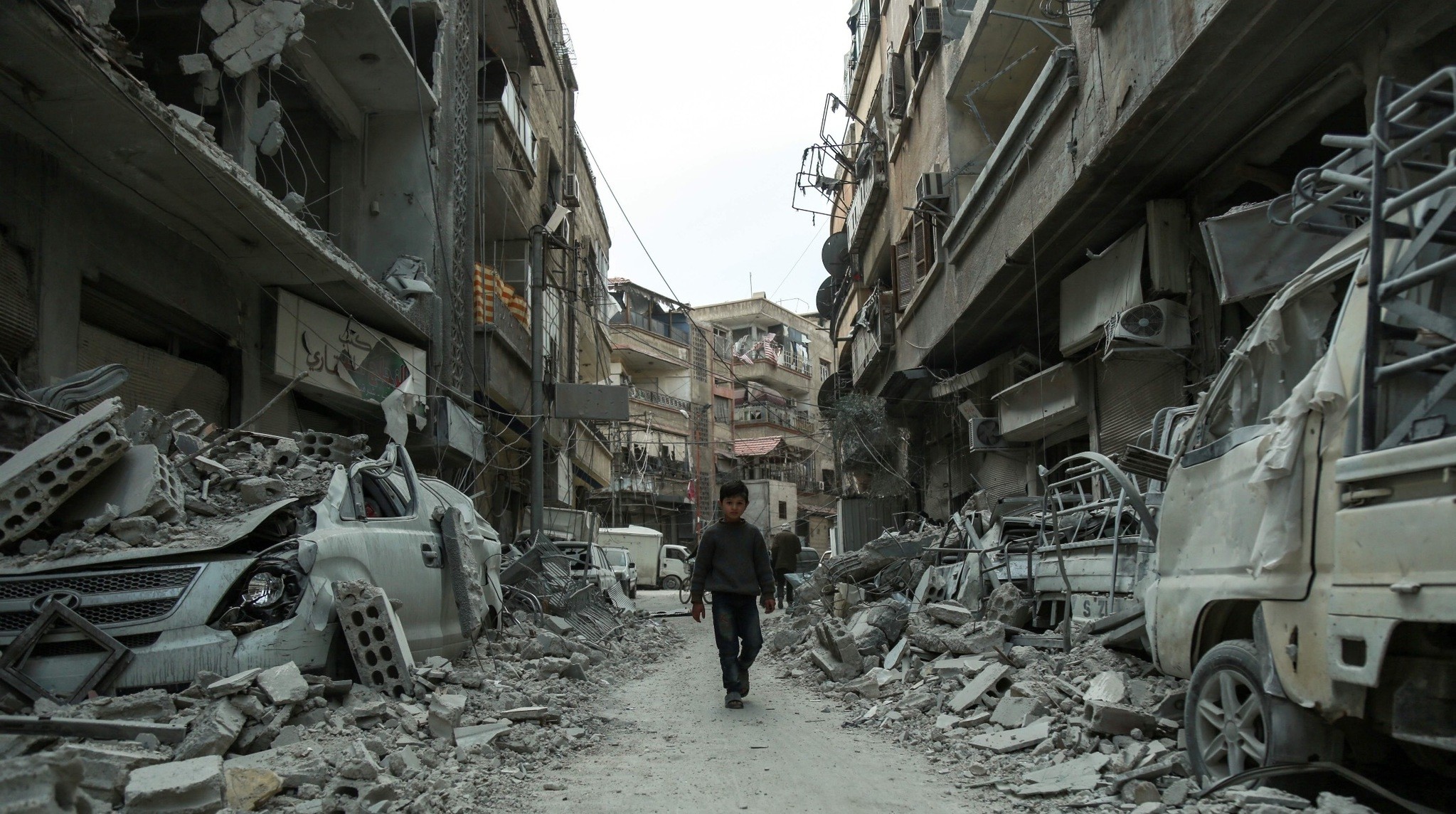Unregulated Logging and Forest Fires Has
Led to the Loss of Orchards and Forests
Conflict and Environment Observatory
(March 31, 2023) — The war in Syria has now entered its 12th year, leaving a long-lasting humanitarian impact on the country as hundreds of thousands of people have been killed and millions displaced.
Beyond these direct impacts on the Syrian people, the severe destruction of cities, towns, agriculture and infrastructure and the collapse of governance pose serious public-health and socio-economic challenges for communities across the country.
vIn particular, the destruction of natural resources and damage to ecosystems has potentially severe consequences for the lives, livelihoods and future of Syrian citizens, as well as for the country’s climate resilience.
The report, titled ‘Axed and Burned,’ is the most in-depth scientific study conducted on the many causes and consequences of tree-cover loss throughout the conflict-affected country.

Why Addressing the Environmental
Impact of Syria’s War Matters
The war in Syria has now entered its 12th year, leaving a long-lasting humanitarian impact on the country as hundreds of thousands of people have been killed and millions displaced. Beyond these direct impacts on the Syrian people, the severe destruction of cities, towns, agriculture and infrastructure and the collapse of governance pose serious public-health and socio-economic challenges for communities across the country.
In particular, the destruction of natural resources and damage to ecosystems has potentially severe consequences for the lives, livelihoods and future of Syrian citizens, as well as for the country’s climate resilience.
The environmental consequences are likely to be long lasting, ranging from conflict-polluted rivers, wells and groundwater, eroded and degraded soils, and human exposure to industrial hazards in bombed areas to damaged water infrastructure and agricultural systems.
It is profoundly important to include these dimensions of the armed conflict in Syria in the post- conflict assessment to understand what is needed for clean-up and remediation efforts in conflict-affected areas. Ecological restoration and rehabilitation of Syria’s natural environment is needed to support the sustainable rebuilding of society and future climate resilience.
Droughts, increased temperatures and water scarcity, caused in part by climate change, are already worsening agricultural conditions and access to clean water. There are concerns that this could increase the risk of wildfires that spread rapidly through forests and croplands, a phenomenon that has been seen frequently in recent years, impacting harvests, villagers and orchards.
One particular environmental dimension of the conflicts is the alarming loss of forest cover caused by the war. From the dense coastal forests on the mountain ranges of Latakia, Tartous and Hama to the many nature reserves and orchards with millions of olive trees and fruit trees, Syria has a rich biodiversity of trees and thriving ecosystems.
While the forests of the coastal mountains play a greater role in protecting water quality and sequestering carbon, forests and trees throughout Syria are an essential element in combating the growing number of heatwaves in a climate that is becoming warmer and drier.
The conflict-linked collapse of forest management is already leading to more widespread forest fires that are destroying towns, villages and livelihoods. Driven by the need for firewood, large parks and orchards are disappearing in and around urban areas, making cities even more prone to the urban heat island effect.
Meanwhile, the decline of orchard management—key to Syria’s agricultural sector—risks having huge economic impacts, affecting both national food security and the livelihoods of tens of thousands of Syrian civilians.
This report aims to understand the depth and breadth of conflict-linked deforestation throughout Syria. Using spatial-temporal analysis of various sources of satellite imagery and public data sets, this is an initial broad remote-sensing study and environmental open-source investigation of how the war has led to widespread logging and the destruction of forested land. The findings will contribute to the growing literature on the environmental dimensions of war, while also providing a more granular analysis of region-specific deforestation and how this impacts the lives and livelihoods of Syrian communities.
Lastly, it will demonstrate that these data are imperative for environmental restoration and rehabilitation efforts, as current and future generations depend upon a healthy environment to rebuild their society, in particular as the compounding impacts of climate change are posing new challenges for a country battered by conflict.

The Environmental Toll of Syria’s War
The role of the environment in relation to armed conflicts has long received little attention in conflict analysis. Only recently has growing attention been paid to climate-change- linked environmental degradation and the conflict sensitivity of diminishing natural resources. This shift has been pushed by international organisations, the humanitarian community and civil society groups.
This long-term policy lacuna was driven by an absence of proper research, the complexity of the triple nexus of conflict-environment-climate and, understandably, prioritisation of humanitarian and economic factors.
As a result, there was a lack of proper investment in the restoration of ecosystems, rebuilding environmental infrastructure and the clean-up of conflict pollution, while prevention or mitigation has not been properly incorporated into military planning. Recent developments such as the updated military guidelines of the International Red Cross and Red Crescent Societies (ICRC) on protection of the environment in armed conflict and legal discussions in the UN on this theme have been helpful in norm building and raising awareness.
Throughout the last seven years, PAX has worked on building a systematic approach of identifying and monitoring the environmental consequences of the conflict in Syria through open-source investigation, remote-sensing analysis, field work and collaboration with our Syrian partners and experts. This work has demonstrated widespread pollution from the professional and makeshift oil industry, the collapse of environmental governance, and climate-induced water shortages affecting agriculture and food security.
One major environmental aspect that so far has lacked proper analysis and inclusion in policy responses is the rapid decline of Syria’s tree cover. Direct targeting of armed forces and militants seeking cover in these forest areas and the use of trees for firewood and charcoal production (both legal and illegal) have resulted in severe deforestation of specific areas in Idlib, Latakia, Tartous and Hama.
In other provinces such as Aleppo and Homs, olive orchards and trees in public parks were cut down, while in Hasakah the little remaining forest was used for heating and cooking, yet later on also for peacebuilding through reforestation efforts. With the use of Earth observation, remote sensing and open-source investigation, we set out to explore the extent to which Syria’s forests have been affected by the conflict, the drivers of deforestation, the links with Syria’s war economy, and potential consequences and solutions.
Read the entire report at this link.
Posted in accordance with Title 17, Section 107, US Code, for noncommercial, educational purposes.
